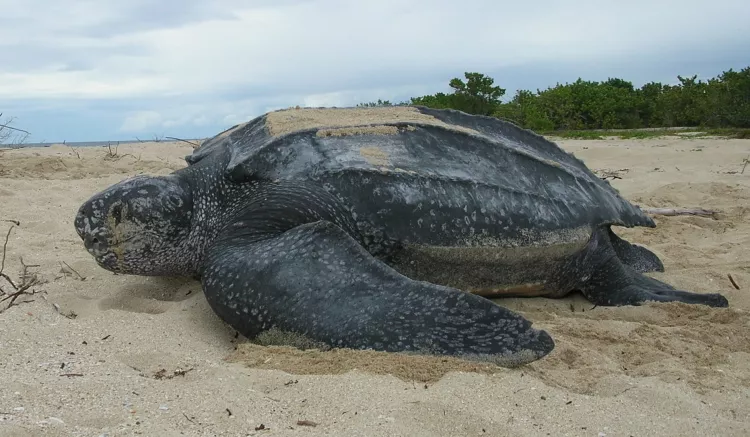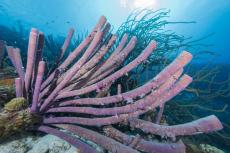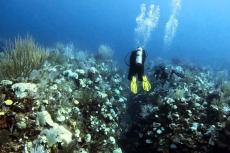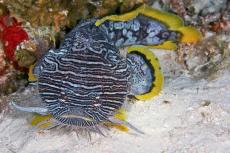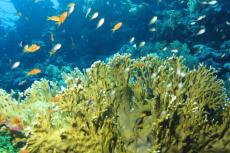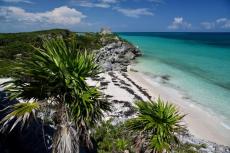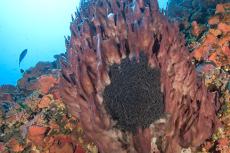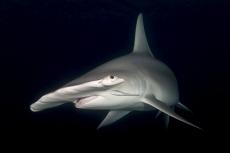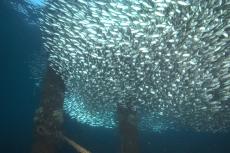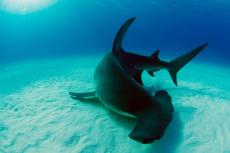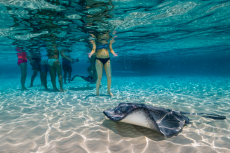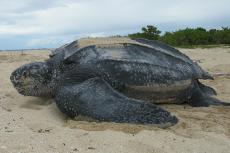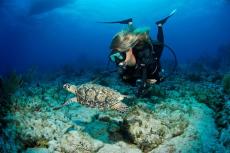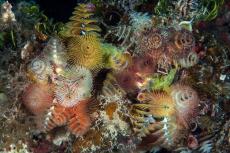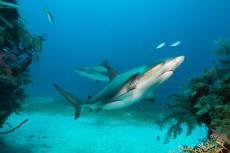Leatherbacks picky about nest sites
New study offers fresh insights into their nesting choices.
A team of researchers from the University of Michigan focused on leatherback sea turtles nesting on St. Kitts, an island in the West Indies southeast of Puerto Rico. The team wanted to know what factors influence where and when the leatherbacks lay their eggs.
It has been suggested that characteristics of the sand, the slope of the beach and proximity to vegetation contribute to the success or failure of nests, but which factors cause female leatherback sea turtles to dig a nest in a particular spot has never been investigated.
During the nesting season, researchers kept track of air and water temperatures, humidity, wind speed, the lunar phase, cloud cover, tides, and levels of natural and artificial light. They also studied the sand in the nest sites and in two control sites per nest, measuring its temperature, pH, conductivity, moisture content and grain size. In total, data were collected for 27 leatherback nests and dozens of control sites.
Compactable sand
"We found that the places the turtles select are different from other places along the same beach where they didn't lay their eggs," Dr Mark Mitchell, who led the study, explained in an EurekAlert press release. "They tend to nest in the sand with a slightly higher pH and a milder conductivity than sand taken at the same depth from the control sites. The leatherback nests are in sand that allows itself to be highly compact."
Conductivity is in part a measure of the wetness of the sand, Mitchell said.
"They don't want the nest to become oversaturated because that could lead to the death of the hatchling. It also can't be too dry," he said. "We also saw that the females like to lay when the moon is closer to full and when cloud cover is low, which probably is based on light."
- Log in to post comments


